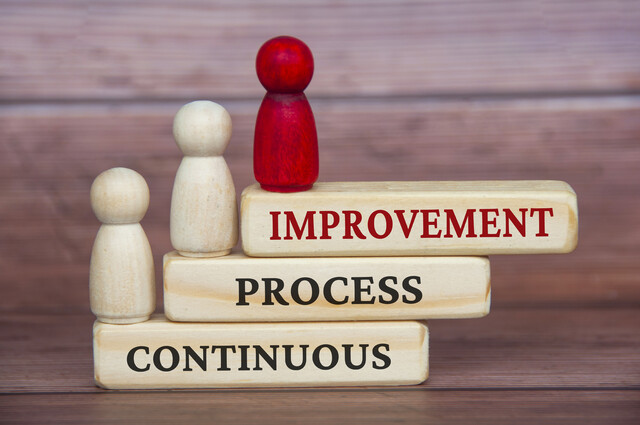In order for a business to have a respectful international workplace, they must begin the process of developing and implementing such a work environment. For many, getting started can seem like an imposing task. There's usually a lot to do-remove the old harmful elements, replace them with something better, repair the damage they've caused until now, AND keep the business' normal operations going without issue. It's a little overwhelming (and that's okay).
The best place to start off in that development and implementation process for a respectful international workplace is the foundation of a psychologically healthy workplace. This basically will allow a business to setup the workplace in such a way that desired elements-like those for a healthy and respectful international workplace-are able to take root and thrive. From this point, it's easier to do everything else that is needed to get things going and to maintain the atmosphere necessary for a healthy workplace.
Whenever you're trying to improve the health of the workplace, there are certain traits that you want to add to the existing environment. As you may recall, some of the desired and identifying features of a healthy workplace include:
Recognition-In being recognized for their work, employees often are more motivated and satisfied in their jobs. Recognition isn't just monetary compensation for a job well done, but feedback, encouragement, and rewards like promotions and benefits.
Opportunities For Growth-It's not just the business that can grow professionally. Employees who are able to grow and develop professionally tend to improve in areas like their performance and quality of work. As with other healthy workplace features, this tends to result in employee satisfaction, job loyalty, and overall morale in the workplace.2
Work-Life Balance-Boundaries between a person's work and personal lives is important towards health and well-being, but those boundaries are becoming increasingly blurred. A healthy workplace is one where the tasks and demands of the job do not follow employees home and interfere with their personal life and responsibilities.3
Step One: Analysis Of The Existing Workplace Environment
The process to create a psychologically healthy workplace usually begins by looking at what you already have. Unless you're completely starting a business from scratch and therefore don't have an existing workplace environment, you need to understand what is already present in the workplace. Analyzing what is already there gives you an idea of what needs to be done and what options are available to you. This works in your favor as you develop that foundation and also gives you the framework for a game plan as you move forward.
Even though this is step one, you may still not be sure where to start. Some of the things that you should do at this stage should include:
Prioritize-In some cases, there are going to be issues present that require immediate action. Prioritizing the problems by severity allows the things that cause the most damage to be addressed in a timely manner. Keep in mind that severely damaging issues are not just the ones that have an immediate or localized impact. Stress, for example, tend to be a high priority because it has a widespread impact and can be a catalyst for a multitude of other problems.4
Brainstorm Solutions-Once you know what needs attention, you can start looking at what to do about them. Your analysis of the current workplace should provide valuable information that you can use to your advantage. Brainstorm potential solutions based on that information, preferably producing as many options for each problem as possible.
Get Employee Input-Sometimes it's best to talk to those who are closest to the problem. In this case, it's the employees in the workplace. Their firsthand experience in that environment makes them a valuable resource in this effort, and they will likely know things about the environment that management doesn't. They're also the ones who are going to be directly impacted by any decisions, so it's best to get their input and feedback about what's going on throughout this process.
Step Two: Look At What Works
It's likely that you will have a better idea of what you're working with thanks to the analysis of the first stage. In addition to having a better understanding of what doesn't work in the workplace, you should also have an understanding of what does work. Simply because a workplace is toxic or unhealthy doesn't mean that everything about it is bad. Even if you are forced to wipe the slate clean and start over from scratch in any project, there still may be some pieces from the original that can be salvaged and reused. This can help save some resources as you rebuild and it could also help employees to have something familiar as they adjust to the new/changed workplace environment.
When you've figured out what needs to be done, you can then begin to take action. However before you can implement any kind of plans or remedies, you have to make sure that you have the resources necessary to do so. Use the information you've gathered thus far to determine what you need to get-remember that you may already have some things that you can be of use to you! That information itself is a valuable resource that you already have, so be sure to use it to your advantage as best as you can.
The resources you need to get will likely fall into one of the following categories:
Financial Resources-Money is always an issue in business when any actions need to be done. Financial resources can include things like reliable fund, service costs, and benefits like insurance. A lack of financial resources can delay any plans for workplace improvement that may be proposed. Having a small budget for any plans to create a healthy workplace can make you hesitant to make expensive decisions, not matter how necessary they are to your efforts. It's best to keep in mind that healthy workplaces do present financial benefits in the long run, so any money that is put into their creation is a worthwhile investment.6
Human Resources-The employees, management staff, business owners/leaders, etc. are all going to be resources that can contribute to the creation of a healthy workplace. Nothing that is done will work if the people in the workplace do not get involved. They are the ones who are going to benefit from these changes and their actions once those changes have been implemented will impact their success. Continue getting input and feedback from employees, and take any suggestions they offer seriously.
Step Four: Protect Your Assets
Whenever an organization chooses to make a major change to itself, there is always the chance that effects can spread throughout the organization-including the areas that were left untouched. While those changes are done with positive intentions, that does not mean that there won't be problems as everything adjusts. Before implementing any plans, it's best to take proactive measures to protect the business and its assets from any side effects.8 This is important as changes can be disruptive, plans can go awry, and people can resist things that they don't like or understand. Plus, it is possible that mistakes can be made when plans are put into motion or that they might not work as well as intended. You don't want to create a bigger problem when you're trying to another. Be thorough and protect what you can BEFORE moving forward in this process, just to be on the safe side.
Step Five: Implement Plans
Chose a point when you want to formally implement your plans to create a healthy workplace. Literally set a date for when all of your resources need to be gathered, the plan finalized, and the change over from the old to the new will begin. Once that date is established, notify everyone who will be affected-namely, the employees in the workplace. Let them know what will be done, how long it should take, and what options are available to them in the interim should they need assistance dealing with issues from the old workplace format or the adjustment.
When that date comes around, finally implement your plans for a psychologically healthy workplace. Lay the foundation and build up. If any part of the plan needs to be adjusted for any reason-run out of funding, lack of resources, resistance to change, etc.-then make sure that it's done quickly to avoid further problems from developing and derailing the entire plan. Remember that it can take time for things to successfully get underway, so don't get discouraged.
Step Six and Beyond: Maintain and Repeat As Needed
Once everything has been put into play and the changes are in place, they need to be maintained. This means evaluating their effectiveness and their effects to determine if they are doing what they are supposed to do. Address any new problems as they arise in order to make sure that they do not impede the things that are working. For some, it may be a good idea to implement improvement plans on a trial period-allow them to be in place for a certain amount of time, with evaluation and modifications at the end of that time. Even once the trial period is over, regular evaluations should be done to insure that things are progressing as intended and to catch any negative developments. Repeat all steps discussed in this article as needed.























